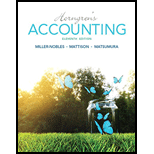
Fraud Case 24-1
Everybody knew Ed McAlister was a brilliant businessman. He had taken a small garbage collection company in Kentucky and built it up to be one of the largest and most profitable waste management companies in the Midwest. But when he was convicted of a massive financial fraud, what surprised everyone was how crude and simple the scheme was. To keep the earnings up and the stock prices soaring, he and his coworkers came up with an almost foolishly simple scheme: First, they doubled the useful lives of the dumpsters. That allowed them to cut
Requirements
- If an asset has either too long a useful life or too high an estimated salvage value, what happens, from an accounting perspective, when that asset is worn out and has to be disposed of?
- Do the rules of GAAP (Generally Accepted Accounting Principles) mandate specific lives for different types of assets?
- How might either too long a useful life or too high an estimated salvage value affect key performance indicators such as
return on investment and residual income?
Trending nowThis is a popular solution!

Chapter 24 Solutions
Horngren's Accounting (11th Edition)
- Can you solve this general accounting problem using accurate calculation methods?arrow_forwardPlease explain the solution to this general accounting problem using the correct accounting principles.arrow_forwardGoodwill is an example of an indefinite-life intangible asset, meaning that public companies must test it for impairment rather than regularly amortizing to systematically reduce its value on the balance sheet of the public company. Can anyone recap the difference between limited-life versus indefinite-life intangible assets? Any specific examples of either category?arrow_forward
 Auditing: A Risk Based-Approach (MindTap Course L...AccountingISBN:9781337619455Author:Karla M Johnstone, Audrey A. Gramling, Larry E. RittenbergPublisher:Cengage LearningCentury 21 Accounting Multicolumn JournalAccountingISBN:9781337679503Author:GilbertsonPublisher:Cengage
Auditing: A Risk Based-Approach (MindTap Course L...AccountingISBN:9781337619455Author:Karla M Johnstone, Audrey A. Gramling, Larry E. RittenbergPublisher:Cengage LearningCentury 21 Accounting Multicolumn JournalAccountingISBN:9781337679503Author:GilbertsonPublisher:Cengage

